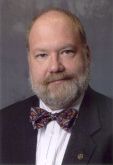|
By 1986, Usenet had outgrown its original set up and it started to experience growing pains. The original scheme of just three worldwide hierarchies — net.* for unmoderated groups, mod.* for moderated groups and fa.* for from ARPAnet — and the fairly haphazard way in which new names were developed was becoming difficult to administer… |
The Great Renaming created the modern Usenet hierarchies.
Until the summer of 1986, the administrators at major Usenet distribution sites worked together informally to manage the Usenet, and developed standard procedures for tasks like adding new newsgroups and distributing messages among the sites. However, from July 1986 to March 1987 the Usenet underwent what has come to be called “The Great Renaming”, which established the modern newsgroup hierarchies in use today. After this event, these original administrators came to be called “The Backbone Cabal”.
The Great Renaming was initiated by Rick Adams originally because a file used to track the newsgroups called “news/sys” was getting too large to be processed efficiently. To fix this problem, the newsgroups were mapped to a new hierarchical set of categories (in a similar approach used in design of the domain name system), and the existing “net”, “mod”, and “fa” newsgroups were replaced with a new structure that evolved into what is now called the Usenet Eight:
- comp– computer science subjects
- humanities– humanities subjects (added ~1996).
- misc– miscellaneous groups
- news– news topics
- rec– recreational subjects
- sci– science topics
- soc– sociological subjects
- talk– controversial topics
These new hierarchies provided a convenient category to allocate pretty much any newsgroup on any topic. However, as might be expected for such a radical restructuring of an existing institution, there was a lot of disagreement across the Usenet with the decisions that led to these new categories. On 1 April, 1987, a message was released to some consternation claiming that the renaming was going to be reversed.
One of the purposes of the renaming was to confine controversial newsgroups to the “talk.” hierarchy, where they could be easily identified for censoring by individual sites if they wished. This didn’t work very well because people resented being pigeon-holed, and so the talk hierarchy withered until the explosion on the Usenet from 1995 onwards when the volume of conversation on the hierarchy began to grow again.
The Usenet network backbone was created by Gene Spafford in 1983, and formalized by him in 1986, as described below.
|
>From Gene Spafford Thu Oct 11 20:05 PDT 1990 – Email from Gene Spafford to Thomas Truscott; Henry Hardy’s The History of the Net; 28 Sept 1993. |
In late 1987, each Usenet site began to choose which other sites it would connect with across the Internet and which groups it would carry, effectively resulting in the development of the modern Usenet. This is still how the Usenet works, so that each site supports a largely common but slightly different set of newsgroups, depending on which sites it connects to and which groups it chooses to carry. Most Usent sites carry well more than 10,000 of the most common groups.
